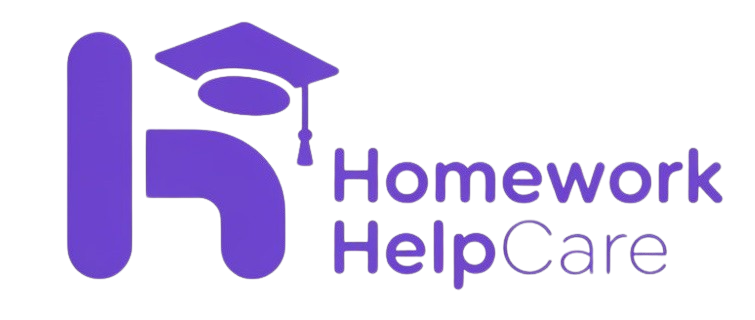Blog
The Art of Note-Taking: A Student Guide for Better Retention
Introduction
Taking effective notes is more than just jotting down information—it’s a powerful learning tool that can dramatically improve your academic performance. Studies show that students who develop strong note-taking skills retain up to 80% more information compared to passive listeners. As educational demands increase across universities like Harvard, Stanford, and MIT, mastering note-taking has become essential for success. This guide will explore proven techniques that transform basic notes into powerful retention tools, helping you process information more deeply and recall it when needed most.
The Science Behind Effective Note-Taking
How Memory Works with Notes
Your brain processes information in three main stages: encoding, storage, and retrieval. Well-structured notes support all three phases by creating stronger neural connections. According to research from the Journal of Educational Psychology, the physical act of writing notes activates regions in the brain that digital typing doesn’t access in the same way. This explains why many students at prestigious institutions like Princeton University still prefer handwritten notes for complex subjects.
Active vs. Passive Note-Taking
| Passive Note-Taking | Active Note-Taking |
|---|---|
| Simply copying information | Processing and reformulating information |
| Limited engagement with material | Deep cognitive processing |
| Lower retention rates (20-30%) | Higher retention rates (50-80%) |
| Focus on quantity over quality | Focus on meaningful connections |
| Single-format approach | Multi-sensory engagement |
Active note-taking engages your brain in critical thinking rather than mere transcription. Dr. Robert Bjork, Distinguished Research Professor at UCLA, emphasizes that “creating desirable difficulties” during note-taking enhances long-term memory formation. When you actively summarize concepts in your own words, you’re forcing your brain to process information more deeply.
Powerful Note-Taking Systems for Students
The Cornell Method
Developed at Cornell University, this system divides your page into three sections: notes, cues, and summary. The Cornell Method is particularly effective for subjects requiring conceptual understanding.
- Notes Section (Right): Record the lecture information using paragraphs, bullet points, and diagrams
- Cue Column (Left): Write key questions, terms, and concepts that relate to your notes
- Summary Area (Bottom): After class, write a brief summary connecting the main ideas
This structure facilitates active recall—one of the most powerful study techniques identified by cognitive psychologists. By regularly reviewing your cue column and testing yourself, you strengthen memory pathways.
Mind Mapping
Mind mapping harnesses the power of visual organization to improve retention. Tony Buzan, the creator of modern mind mapping, found that this technique can increase memory recall by up to 32% compared to linear note-taking.
A mind map starts with a central concept and branches outward with related ideas, using:
- Colors to designate different themes
- Images for visual memory anchors
- Single keywords rather than phrases
- Connecting lines showing relationships between concepts
Mind mapping is particularly effective for visual learners and creative thinkers, making it popular among students at design schools like RISD and engineering programs at MIT where conceptual connections are crucial.
The Outline Method
The outline method uses a hierarchical structure with main topics, subtopics, and supporting details. This organized approach works exceptionally well for structured lectures and material with clear categories.
For example:
- Main topic
- Subtopic
- Supporting detail
- Supporting detail
- Subtopic
- Supporting detail
- Subtopic
This method is favored in law schools like Yale and Columbia, where organizing complex information hierarchically improves both understanding and retention.
Digital vs. Handwritten Notes: Finding Your Balance
The Handwriting Advantage
Research from Princeton University and the University of California found that handwritten notes lead to better conceptual understanding and long-term retention. When writing by hand, students:
- Process information more deeply
- Are forced to be selective and concise
- Create stronger memory associations
- Benefit from motor memory reinforcement
Professor Mueller from Princeton notes that “the constraints of handwriting may actually be beneficial” because they require more processing and reformulation of information.
Digital Note-Taking Benefits
Digital notes offer significant advantages in organization and accessibility:
| Digital Advantage | Benefit to Students |
|---|---|
| Searchability | Quickly find specific information across all notes |
| Organization | Tag, categorize, and link related concepts |
| Multimedia integration | Include images, audio recordings, and videos |
| Cloud synchronization | Access notes across all devices |
| Easy editing | Refine and expand notes over time |
Applications like Notion, Evernote, and OneNote have transformed how students at Stanford and other tech-forward universities manage their information. Digital tools are particularly valuable for collaborative projects and research-intensive courses.
Hybrid Approaches
Many successful students adopt a hybrid approach, combining the cognitive benefits of handwriting with digital organization:
- Take initial notes by hand during lectures
- Transfer important information to digital systems later (which serves as a valuable review)
- Use digital tools for organization and long-term storage
- Apply handwriting for difficult concepts requiring deeper processing
Note-Taking Strategies for Different Learning Environments
In-Class Note-Taking Techniques
When taking notes during lectures, focus on capturing key concepts rather than transcribing everything. Professors at institutions like Harvard recommend:
- Listen for verbal cues indicating important information
- Pay attention to what’s written on boards or slides
- Note repeated concepts or emphasized points
- Use abbreviations and symbols to increase writing speed
- Leave space for later clarification and expansion
Renowned educational psychologist Dr. Richard Mayer emphasizes that “meaningful learning requires good note-taking strategies that help select, organize, and integrate information.”
Reading and Research Notes
When taking notes from textbooks or research papers:
- Preview the material before detailed reading
- Highlight sparingly (no more than 10-15% of text)
- Write margin notes asking questions or making connections
- Summarize key points after each section in your own words
- Create concept maps connecting new information with existing knowledge
These active reading strategies are taught at Columbia University’s Academic Success Programs as they significantly enhance comprehension and retention.
Revision and Review Strategies
The Power of Spaced Repetition
Spaced repetition is a technique where you review notes at increasing intervals over time. This approach aligns perfectly with how our memory works, strengthening neural pathways just as they begin to fade.
| Review Interval | Purpose |
|---|---|
| Same day (evening) | Initial consolidation |
| 1-2 days later | Short-term reinforcement |
| 1 week later | Medium-term strengthening |
| 2-3 weeks later | Long-term integration |
| Monthly thereafter | Maintenance |
Research from Washington University in St. Louis shows that spaced repetition can improve long-term retention by up to 200% compared to cramming.
The 5 R’s Method for Note Revision
- Record: Take comprehensive notes during learning sessions
- Reduce: Condense these notes into key concepts and relationships
- Recite: Verbally explain the material in your own words
- Reflect: Connect new information with previously learned concepts
- Review: Regularly revisit your notes using spaced repetition
This systematic approach transforms passive notes into active learning tools and is recommended by learning specialists at Stanford University’s Academic Skills Coaching program.
Technology Tools for Enhanced Note-Taking
AI-Assisted Note-Taking
Modern technology offers powerful tools to enhance traditional note-taking:
- Speech-to-text applications for fast-paced lectures
- AI summarization tools to extract key points from lengthy materials
- Smart pens that synchronize handwritten notes with audio recordings
- Note organization platforms with tagging and linking capabilities
Students at MIT and Carnegie Mellon are developing innovative ways to integrate AI into their study routines without sacrificing the cognitive benefits of traditional note-taking.
Collaborative Note-Taking Platforms
Platforms like Google Docs, Notion, and Microsoft OneNote enable collaborative note-taking, which research shows can improve comprehension through:
- Exposure to multiple perspectives
- Distribution of note-taking responsibilities
- Immediate peer clarification of difficult concepts
- Building a more comprehensive knowledge base
The University of Michigan’s Center for Academic Innovation found that structured collaborative note-taking improved course performance by an average of 8% compared to individual note-taking alone.
Note-Taking for Different Learning Styles
Visual Learners
If you process information best through images and spatial relationships:
- Use color-coding systems
- Create diagrams and flowcharts
- Employ mind maps extensively
- Incorporate illustrations and symbols
- Organize notes spatially on the page
Visual note-taking activates different neural pathways than text alone, enhancing memory formation and recall, according to research from the Visual Learning Research Center.
Auditory Learners
For those who learn best through listening:
- Record lectures (with permission)
- Recite notes aloud during review
- Participate in study groups with discussion
- Use phonetic spelling for difficult terms
- Create rhymes or songs from key information
Auditory learners benefit from tools like Otter.ai that transcribe spoken lectures, allowing them to focus on listening while still having comprehensive text notes for later review.
Kinesthetic Learners
If you learn best through physical engagement:
- Take notes while standing or moving
- Use flashcards you can manipulate
- Create physical models representing concepts
- Teach concepts to others using gestures
- Take frequent, short breaks during note-taking
Research from the American Kinesiology Association shows that incorporating movement into study sessions can improve retention by 40% for kinesthetic learners.
Troubleshooting Common Note-Taking Challenges
When Lectures Move Too Fast
- Develop a personal shorthand system
- Focus on concepts rather than verbatim recording
- Use recording apps (with permission)
- Form study groups to compare and combine notes
- Meet with instructors during office hours to clarify
Maintaining Focus During Note-Taking
The average student’s attention span during lectures is only 10-15 minutes. Combat this with:
| Challenge | Solution |
|---|---|
| Mind wandering | The Pomodoro technique (25 min focus/5 min break) |
| Distractions | Dedicated note-taking environment |
| Digital temptations | Website/app blockers during study sessions |
| Energy dips | Strategic caffeine or protein snacks |
| Motivation issues | Connect material to personal goals/interests |
Researchers at Stanford’s Center for Teaching and Learning recommend changing your note-taking approach every 15 minutes to maintain engagement—switch from outline format to mind mapping, or from listening to questioning.
FAQs About Effective Note-Taking
For science courses, combine the Cornell Method with diagrams and flowcharts. The left column works well for formulas and technical terms, while the notes section can include detailed processes and experimental results. Review by covering your notes and using the cue column to recall procedures and concepts.
Online learning requires additional structure. Create a dedicated digital notebook for each course, use timestamps to mark important points in recorded lectures, and actively participate in the chat. Consider a dual-monitor setup—one for viewing the class and another for taking notes. The split-screen approach helps maintain engagement in virtual environments.
Research consistently shows handwriting activates more regions in your brain, leading to better conceptual understanding. However, typing allows for faster recording and easier organization. Many successful students use a hybrid approach: handwrite initial notes to process information deeply, then transfer key concepts to digital systems for organization and searchability.
Focus on quality over quantity. Your notes should capture main concepts, supporting details, and relationships between ideas—not every word spoken. Harvard’s Academic Resource Center recommends noting anything that: (1) surprises you, (2) contradicts your prior knowledge, (3) is emphasized by the instructor, or (4) connects multiple concepts together.

